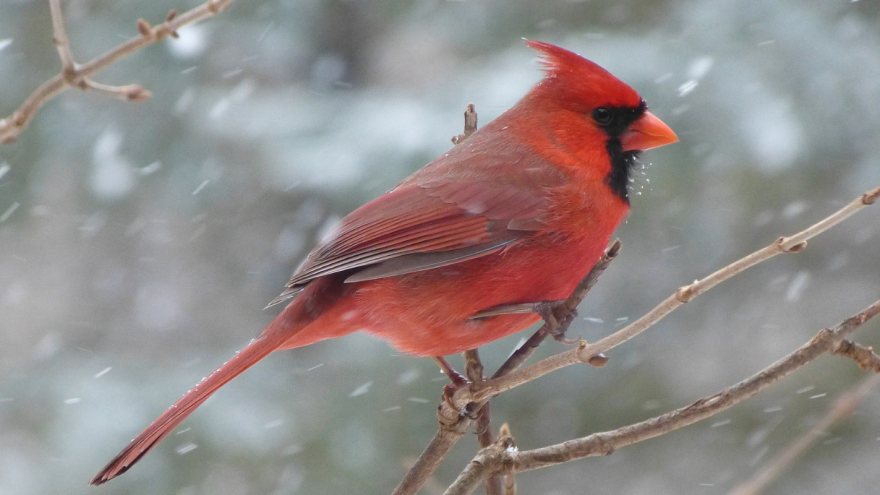BETHLEHEM, Pa. - This weekend kicks off local efforts for the 123rd Christmas Bird Count — one of the biggest citizen science projects in the country, and a tradition for many.
The Audubon Society-led count takes place annually from Dec. 14 to Jan. 5, with events for specific 15-mile circular areas designated by the organization and local managers.
- The annual Christmas Bird Count has its first local counts this weekend
- Recent research showing declines in bird populations emphasize the importance of the long-term data collecting
- People who want to participate must make arrangements with count compilers for their area in advance
People who want to participate must make arrangements with count compilers for their area in advance and count every bird they see or hear all day.
Peter Saenger, a biology professor with Muhlenberg College's Acopian Centerfor Ornithology and president of the Lehigh Valley Audubon Society, said he has participated in the project for decades as a birdwatcher with a team for the Lehigh Valley circle.
"Bird watching in general is incredible amount of fun," Saenger said. "Just getting out and enjoying nature enjoying birds, camaraderie."
He said everyday birders contributing to such events are very important to the science, and that even just more people watching feeders within the count area would help.
"Ornithology is the one science where amateurs have contributed a tremendous amount of information even beyond the professionals," Saenger said. "So it's really a great area for people that have an interest but not formal background.
"Anybody that has backyard feeders can add to the count."
Bill Etter, count compiler and organizer for the Upper Bucks County count, said new participants usually are paired up with people experienced with the count to learn the ins and outs.
"A lot of new people are surprised to learn a lot the first time," Etter said. "How to find these birds, how to keep track of them and know their calls and their songs and the habitats that they can be found in just kind of poking around your area."
Begun in 1900, the project is one of the longest-running community science events in the world. Data gathered from the count provides a large set of annual data to be used in many different examples scientific research.
Some nearby spotting circles are:
- Lehigh Valley (West Allentown, Emmaus, Macungie, Longswamp Township)
- Count Date: 12/17/2022
- Contact: Brandon Swayser, BSwayser@wildlandspa.org
- Bethlehem-Easton
- Count Date: 12/31/2022
- Contact: Elaine Mease, measede@enter.net
- Upper Bucks County
- Count Date: 12/18/2022
- Contact: Bill Etter, billetter01@gmail.com
- Warren County-Northampton County (Merrill Creek Reservoir)
- Count Date: 12/19/2022
- Contact: John Parke, Jparke@merrillcreek.com
- Wild Creek-Little Gap
- Count Date: 12/26/2022
- Contact: Corey Husic, coreyhusic@gmail.com
You can see more information for the circles here:
On Saturday, Jan. 7, the Lehigh Valley Audubon Society will hold a "Christmas Bird Count for Kids" event at Muhlenberg College that will teach ages 6-12 how to use binoculars, identify common birds and collect data.
Prior to the Lehigh Valley circle count, the Wildlands Conservancy will hold a short primer at 8 a.m., where they will provide binoculars if needed.
Birds in need
In 2019, the first-ever comprehensive assessment of net bird population change in the United States and Canada was published by wildlife research organizations.
The report showed that the North American bird population has had a net decline of nearly 3 billion adult birds of breeding age, with losses across biomes, since 1970, especially among common birds.
The report relied in large part on Christmas Bird Count data and similar studies.
“We can’t really put our finger on the pulse of status and trends if we don’t have longitudinal data,” Becca Rodomsky-Bish of the Cornell Lab of Ornithology in Ithaca, N.Y., said this year.
“So if we hadn’t had the 50-year Christmas bird count, we wouldn’t be able to look at those numbers, and honestly, the scientists that are in the lab that I see every day were shocked at the results.”
Saenger at Muhlenberg said because conditions or exact places watched change year after year, having long-term data is important to get an accurate look at the trends for research.
Last year, Muhlenberg College Acopian Center for Ornithology professor Daniel Klem published a book of strategies to protect bird population from windows, which are a leading danger for the animals.
Etter said that for his circle in Upper Bucks, there have been observable declines or disappearances of some bird species, such as game birds, but some key species, such as bald eagles and peregrine falcons, have seen a noticable return.
"No one really knows [why], that's why it's important to collect the data so that maybe someone can figure it out," Etter said.
To support bird populations, the Cornell Lab of Ornithology has published seven actions that people can do to help the bird populations:
- Make windows safer by installing screens and other means of breaking up reflections
- Keep cats indoors, as the non-native pets are the No. 1 human-caused reason for the loss of birds other than habitat loss
- Introduce more native plants to your yards, giving birds more shelter, nesting space and food sources
- Avoid pesticides, as many are toxic to birds either directly or from consuming contaminated seeds or insects
- Replace your coffee source with one that’s shade-grown to support birds’ habitats
- Reduce plastic usage to lower your impact on plastic pollution in waterways and other bird habitats
- Observe, share and record birds for projects like the Christmas Bird Count or the Lab's eBird documentation software


